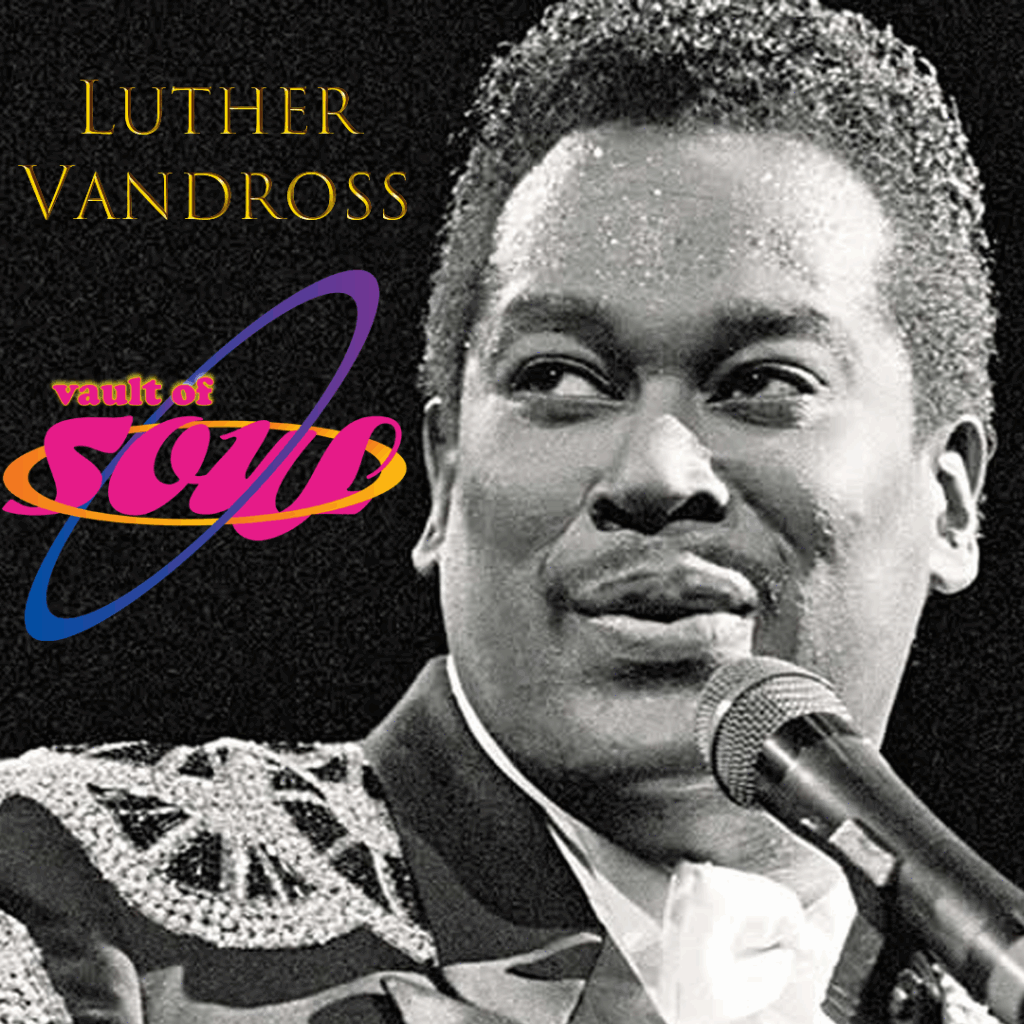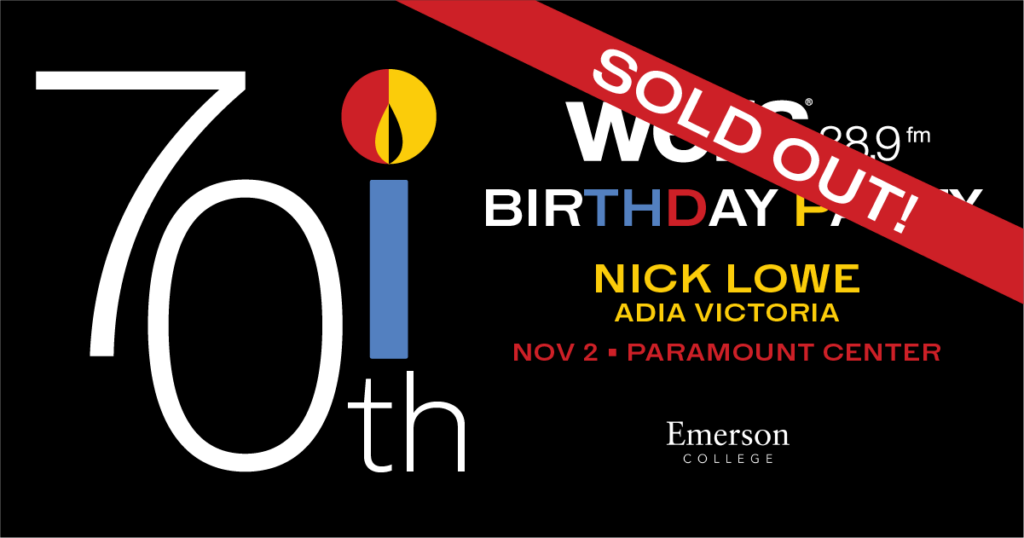
By Fenton Wright, Web Services Coordinator
Each week of June, we open the 88.9 Vault of Soul with profiles of iconic soul pioneers. To continue 2025’s June coverage, WERS recognizes Luther Vandross, one of the most recognizable names and voices in R&B, through the 80s, 90s, and 2000s.
Biography
Before Luther Vandross became one of the kings of R&B, and before he got the nickname “Velvet Voice” for the smoothness of his voice, he was born on April 20, 1951 in New York City. He was the youngest of four and it was in his childhood home in Manhattan that he would teach himself to play the piano at only the age of three. From a young age, Vandross was always surrounded by music. His father was a singer as well as working other jobs and his sisters sang in multiple groups across New York. At the age of eight, Vandross’ father passed away and the family moved to the Bronx neighborhood in New York. His sisters after the move began taking a young Vandross to see musicians at the Apollo Theater. Vandross attended college for one semester before dropping out to pursue his musical career.
In the Background
At the start of Vandross’ musical career, he began as more of a behind the scenes talent as opposed to the household name that we know him as today. He sang backing vocals for artists like Donny Hathaway and Roberta Flack, as well as others such as Diana Ross. Aside from mainstream R&B music, Vandross also wrote music for Broadway musicals like The Wiz (1975). Many popular songs and jingles for companies such as KFC were also created by Vandross in the 70s and 80s. One of the most recognizable musicians of all time, David Bowie worked with Vandross on tour and multiple songs at the beginning of Vandross’ career. Bowie and Vandross worked together while Bowie was on tour in 1974. Vandross, along with his work with backing vocals, writing, and producing, looked to put himself in front of the world, forming a quintet named Luther. The group released their first album, Luther, in 1976 and their second album, This Close To You, in 1977. Neither of the two garnered much success and ended in the group’s disbandment. Vandross did not start to truly gain popularity until he joined the group Change as the lead singer in the 80s. The band’s two most popular songs, “The Glow of Love” and “Searching,” featured Vandross in a more prominent position than he had been in his career up to that point.
Rise to Stardom
Following his success as the lead singer of Change, Vandross released his debut solo album, Never Too Much in 1981. Despite being his debut album, Never Too Much was a massive success. It charted at 19 on the US Billboard 200 and at number one on the Top R&B/Hip-Hop Album chart. This album featured songs such as the title track “Never Too Much” and a cover of Dionne Warwick’s 1965 song ‘A House Is Not A Home.” Never Too Much not only propelled Vandross into stardom, but also gave Vandross more influence to continue his work as a producer and writer for other artists. In the 80s, Vandross released a series of albums like Forever, for Always, for Love, Busy Body, The Night I fell In Love, and more also peaked at number one on the R&B/Hip-Hop charts. Simultaneously, Vandross began working with many of the artists that inspired him growing up. He worked as the lead producer on Aretha Franklin’s Jump To It in 1983. Vandross was also able to work with Dionne Warwick, whose song he covered on Never Too Much, and was one of his main musical influences. Vandross worked on Warwick’s album How Many Times Can We Say Goodbye in a writing, producing, and singing capacity. On the title track, Vandross and Warwick sang a duet that peaked at number 27 on the Hot 100 Chart.
Becoming Velvet
At the culmination of the 80s, 1989, Vandross already had enough hit songs to release his first compilation album, The Best of Luther Vandross The Best of Love. Heading into the 90s, Vandross was already one of if not the most well-known R&B singers of his time. The 90s saw more releases from Vandross with the likes of Power of Love (1991), This album led to Vandross’ first Grammy for Best R&B Vocal Performance in 1991 and winning the award in the following year as well. The title track, “Power of Love/Love Power,” won the Grammy for Best R&B song in 1992 as well. Other albums that were released by Vandross in the 90s include Never Let Me Go (1993), and even a Christmas album in 1995 titled This Is Christmas.
Vandross continued his producing work for other artists as well. He wrote, produced, and sang on Whitney Houston’s song “Who Do You Love,” which was featured on her album I’m Your Baby Tonight. He also featured on the song “The Best Things in Life are Free” with Janet Jackson in 1992 for the movie Mo’ Money, and in the following year he would appear in the movie The Meteor Man further moving Vandross into the spotlight of the world, which he was already firmly a part of. One of the crowning moments of Vandross as an artist on the public stage came in 1997 when he took the stage at Super Bowl 31 to sing “The Star Spangled Banner.” Through the course of his career, Vandross would tour with countless different backup singers. The great Lisa Fischer stuck with Vandross on tours and as a background vocalist for 22 years.
As the 2000s approached, Vandross pulled back on his producing and singing, appearing with Diana Ross on tour and producing his final song with Doc Powell. In 2003, however, Vandross released his final studio album, Dancing With My Father, which as the title suggests was a tribute to his late father. The album was inspired by memories from his childhood that Vandross knew personally and that his mother had told him over the years. In the first week of its release, Dancing With My Father charted at number one on the Billboard 200 album chart, the only album of his career to do so. Vandross went on to win the Grammy for song of the year with the title track, “Dancing With My Father,” and his final Best Male R&B Vocal Performance award in 2004. However, during the award show, Vandross was not present to accept his award as his health grew increasingly worse. His last public appearance was in 2004 on the Oprah Winfrey Show, and Vandross passed away on July 1, 2005.
Always A Legend
Underlying the passing of Vandross came multiple tributes and articles published about one of R&B’s most influential figures of all time. Much of what we know about Vandross personally has come out after his death. On the stage, Vandross was one of the brightest stars that the genre has ever seen, and the pressure to uphold that image behind the scenes resulted in Vandross constantly feeling the need to hide who he was as a person. Many of his friends as well as contemporaries such as Patti LaBelle confirmed in interviews that Vandross was gay. On top of having to hide who he was to the world, Vandross constantly struggled with his weight, fluctuating between losing and gaining weight. Dealing with this pressure and still producing some of the greatest songs and albums that R&B has ever seen only adds to the legend of Luther Vandross.
Who Influenced Luther Vandross
- Dionne Warwick
- Donny Hathaway
- Aretha Franklin
- Smokey Robinson
- Motown Ensemble
Who Luther Vandross Influenced
- Boyz II Men
- D’Angelo
- John Legend
- Ne-Yo
- Usher
Luther Vandross’ Awards and Honors
- Grammys, Best Male R&B Vocal Performance, (1991)
- Grammys, Best Male R&B Vocal Performance, (1992)
- Grammys, Best Rhythm & Blues Song, (1992)
- Grammys, Best Male R&B Vocal Performance, (1997)
- Grammys, Best R&B Album, (2004)
- Grammys, Best R&B Vocal Performance by a Duo or Group, (2004)
- Grammys, Best Male R&B Vocal Performance, (2004)
- Grammys, Song of the Year, (2004)
- Soul Train Award, Album of the Year – Male, (1987)
- Soul Train Award, Best R&B/Urban Contemporary Album of the Year – Male, (1990)
- Soul Train Award, Best R&B/Soul Album – Male, (1992)
- Soul Train Award, Quincy Jones Award for Outstanding Career Achievements, (1999)
- American Music Award, Favorite Soul/R&B Male Artist, (1988)
- American Music Award, Favorite Soul/R&B Male Artist, (1990)
- American Music Award, Favorite Soul/R&B Male Artist, (1992)
- American Music Award, Favorite Soul/R&B Album, (1992)
- American Music Award, Favorite Soul/R&B Male Artist, (1994)
- American Music Award, Favorite Soul/R&B Male Artist, (1996)
- American Music Award, Favorite Soul/R&B Male Artist, (2002)
- American Music Award, Favorite Soul/R&B Male Artist, (2003)
- Walk of Fame (2014)
Spotlight Tracks
“Never Too Much” (1981)
Probably the most recognizable song from Luther Vandross is “Never Too Much,” which was the title track of his debut album that was released in 1981. This song spotlights everything that makes Vandross such a legendary artist. You can hear how silky smooth his voice is and how despite the notes being so high, Vandross sings them effortlessly. On top of that, you can hear how well his voice is complemented by the upbeat instrumentation in the background. On top of his voice, the lyrics paint the picture of someone who truly knows what it feels like to be in love with another person.
“Take You Out” (2001)
Another one of Vandross’ well-known songs is “Take You Out” which featured on his self-titled album that was released in 2001. This song for me personally is my favorite Luther Vandross song. I have vivid memories of being with my father and this song constantly playing in the background, whether it be on drives to school, or road trips, this song was almost always playing on the radio. Aside from the personal connection that I have to this song, it also highlights the best qualities of Vandross. We hear the strain in his voice as he is singing for the love of another person. The quiet backing vocals add to the smoothness of the song and make it feel even more intimate than it already is.
“Dancing With My Father” (2004)
“Dancing With My Father” is one of the most beautiful songs that Vandross ever gave to us. It is a switch up from his usual talk of loving another person. In this song, he is not longing for the love of a partner, but instead he is longing for the love of his father again. On this song we hear a Vandross who has grown older and realizes all that he misses with his father. He misses the dances and all the little things that his father used to do for him and his family. At the same time, however, Vandross recognizes how his mother misses his father more than him, because she truly loved him. Overall, this song is painfully beautiful and anyone who has ever lost anyone important to them can relate to it.


